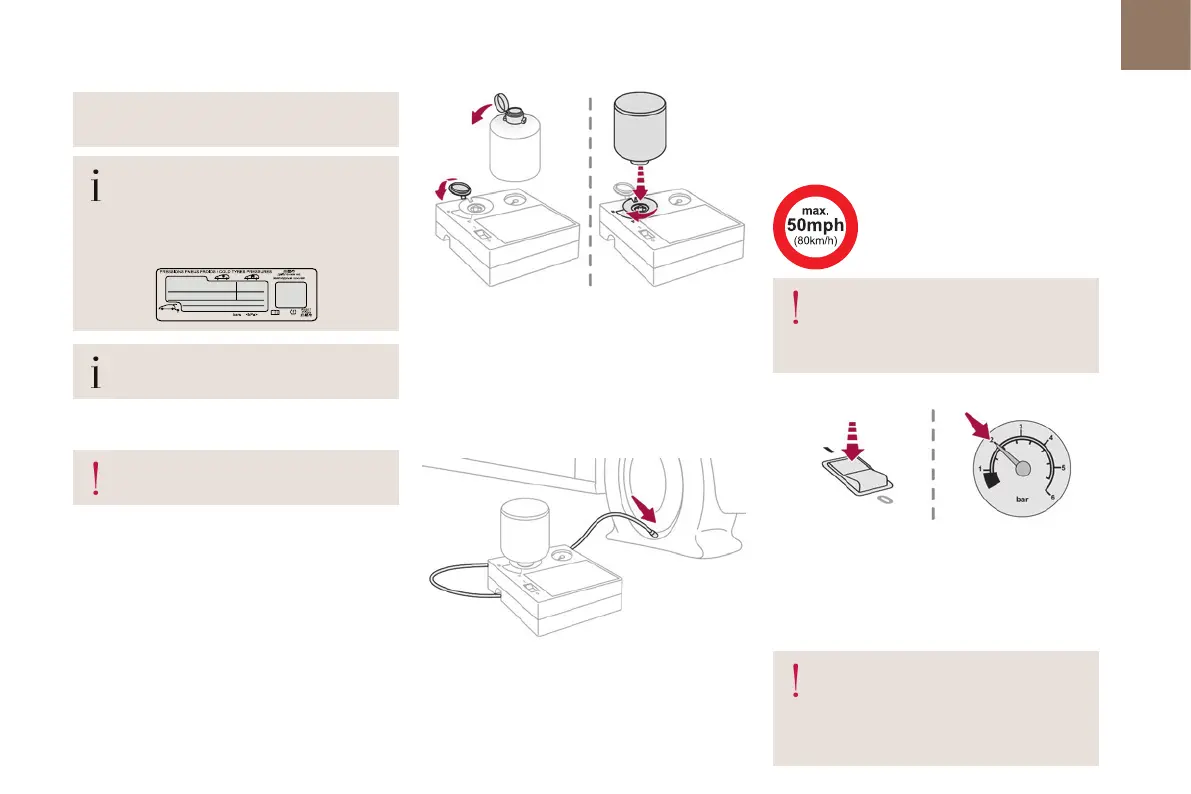173
In the event of a breakdown
08
power supply for long enough to repair a tyre
after a puncture.
Tyre inflation pressures are indicated on
this label.
For more information on Identification
markings, particularly this label, refer to the
corresponding section.
For more information on the Tool kit, refer
to the corresponding section.
Repair procedure
Do not remove any foreign body (e.g.nail,
screw) which has penetrated the tyre.
► Park the vehicle without obstructing traffic
and apply the parking brake.
► Follow the safety instructions (hazard warning
lamps, warning triangle, high visibility jacket,
etc.) according to the legislation in force in the
country in which you are driving.
► Switch the ignition off.
► Remove the transparent cap from the bottle
of sealant.
► Lift the protective cover before installing the
bottle of sealant on the compressor.
► Turn the bottle of sealant over and screw it a
quarter turn into the compressor.
► Remove the valve cap from the tyre to be
repaired, and place it in a clean place.
► Uncoil the pipe stowed under the compressor.
► Connect the pipe from the compressor to the
valve of the tyre to be repaired and tighten firmly.
► Check that the compressor switch is in
position"O".
► Fully uncoil the electric cable stowed under
the compressor.
► Connect the compressor's electric plug to the
vehicle's 12V socket.
► Affix the speed limit sticker.
The speed limit sticker must be affixed
inside the vehicle in the area close to the
driver, to remind them that a wheel is in
temporary use.
► Switch the ignition on.
► Switch on the compressor by moving the
switch to position"I" until the tyre pressure
reaches 2bar. The sealant product is injected
under pressure into the tyre; do not disconnect
the pipe from the valve during this operation (risk
of blowback).
If after approximately 7minutes, the
pressure of 2bar is not reached, this
indicates that the tyre is not repairable;
contact a dealer or a qualified workshop for
assistance.

